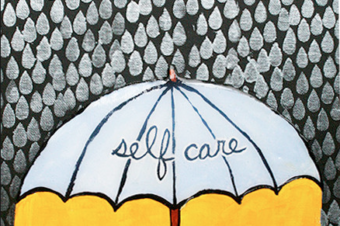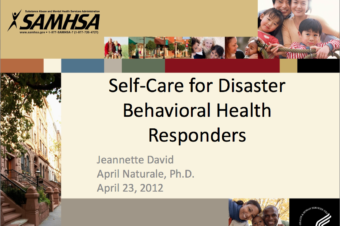This tip sheet covers signs and symptoms of retraumatization, as well as how to know if you may benefit from more help and guidance on how to manage it. The tip sheet also lists resources for support and identifies ways you can build resilience, which is your ability to tap into your skills and access the resources around you when you are going through stressful experiences. Download the tip sheet to learn more.
Similar Posts
SAMHSA Disaster Behavioral Health Information Series installment
This installment focuses on the behavioral health effects of responding to a disaster. It provides... Read More
The SAMHSA Behavioral Health Disaster Response App
SAMHSA’s mobile application (app) helps behavioral health responders provide quality support to survivors. With the... Read More
Self-Care for Disaster Behavioral Health Responders
The goal of the Self-Care for Disaster Behavioral Health Responders Podcast is to provide information,... Read More
Helping Responders in the Wake of Disaster
It’s crucial to help medical professionals, first responders, family members, and victims both administer or... Read More
Behavioral Health Treatment Providers Manual
The manual can develop COOP’s to guide training for staff and volunteers in their roles... Read More
Tips for Disaster Responders: Preventing and Managing Stress
The sheet provides tips to help disaster response workers prevent and manage stress. Includes strategies... Read More




